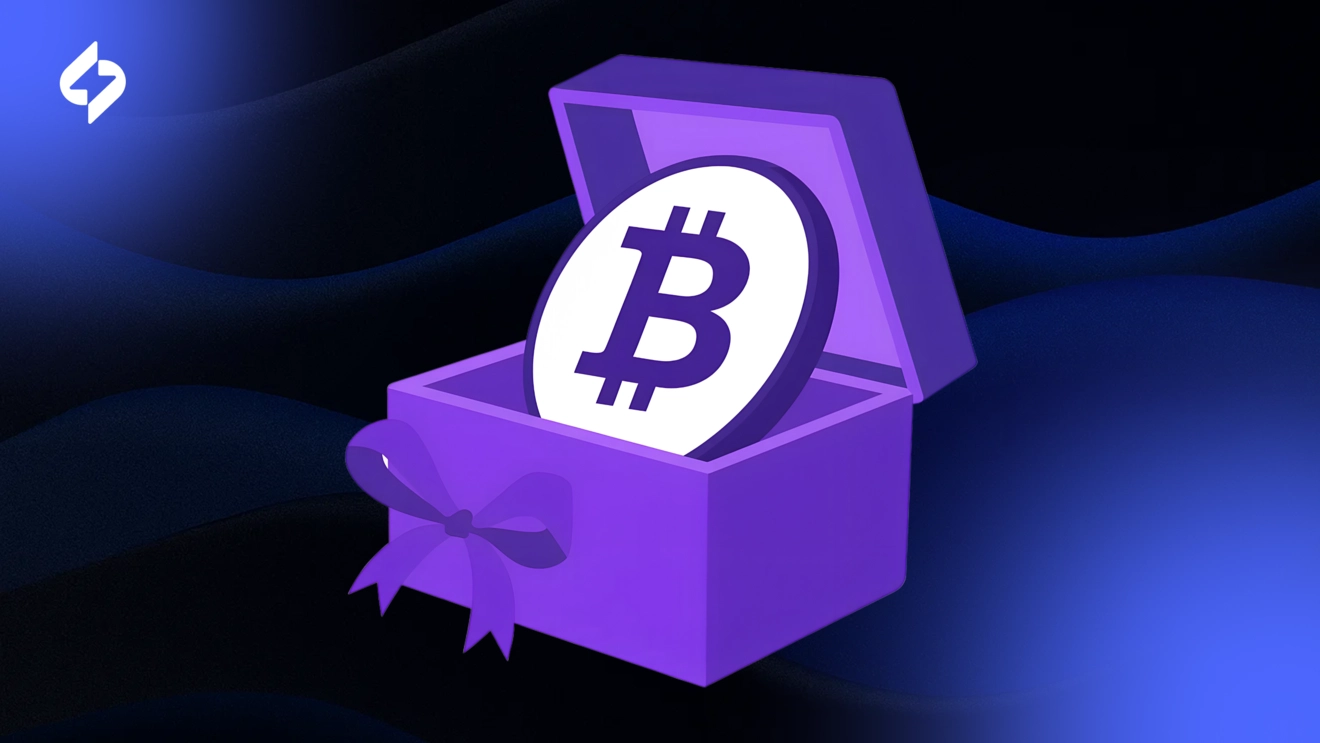Wrapped Bitcoin (WBTC) is an ERC-20 token that represents a tokenized version of bitcoin at a 1:1 ratio, designed for use in smart-contract ecosystems, primarily DeFi. The reserve BTC are held by a custodian – a regulated storage provider responsible for safe custody and maintaining the 1:1 backing. Merchants – infrastructure participants such as exchanges, OTC providers, and brokers – handle user requests and interact with the custodian and the smart contract to mint and burn WBTC.
History and idea
WBTC emerged as a way to deploy bitcoin liquidity in smart contracts. In 2019, an industry consortium launched WBTC on Ethereum. The role-split model formalized accountability: the custodian safeguards the BTC reserves, merchants serve user mint/redeem requests, and a DAO coordinates upgrades and the list of participants.
WBTC operates on Ethereum (ERC-20). It is also available on Arbitrum, Optimism, Base, Avalanche C-Chain, BNB Chain, and Polygon PoS – in these networks it is provided via bridges/integrations (including those supported by BitGo). When using WBTC outside Ethereum, consider the additional risks of bridges.
Core roles in the WBTC ecosystem
- User – initiates minting or redemption via a merchant, provides addresses, and passes basic checks. Users interact through infrastructure participants rather than directly with the contract.
- Merchant – an accredited participant that onboards and verifies clients (KYC/AML), accepts BTC/issues WBTC, and triggers mint/burn operations on the client’s behalf. After DAO approval, a merchant configures its BTC settlement address and follows the mint/burn procedures.
- Custodian – stores the reserve BTC and confirms 1:1 backing by authorizing issuance and redemption. BitGo has historically played this role and states it provides public proof of reserves.
- WBTC DAO – coordinates system parameters and manages allowlists of custodians and merchants via multisig contracts; oversees updates and participant add/remove procedures. Audit and deployment procedures are described in public repositories.
How it works
The primary WBTC operations are minting and redemption.
Minting. The user contacts a merchant and deposits BTC. The merchant performs checks and submits a request to the custodian. After the BTC deposit is confirmed, the smart contract mints the equivalent amount of WBTC to the specified address. Circulating WBTC increases exactly by the amount of BTC locked with the custodian – preserving the 1:1 ratio.
Redemption. The user delivers WBTC to the merchant for on-chain burn, after which the custodian transfers the equivalent BTC to the user. Circulating WBTC decreases by the same amount as the BTC reserve.
Why WBTC is useful
- DeFi access. Native BTC does not directly support EVM smart contracts. As an ERC-20, WBTC is immediately compatible with DEXs, liquidity pools, lending markets, and derivatives.
- Liquidity management. Moving WBTC across EVM networks is typically faster and cheaper, which is convenient for collateral, refinancing, and arbitrage.
- Cross-ecosystem integrations. While the base implementation is on Ethereum, bridges make WBTC available in other networks.
Examples of use
- Collateralized lending. Many protocols accept WBTC as collateral with risk parameters that account for the custodial model.
- Trading and liquidity pools. Pairs like WBTC/ETH and WBTC/stablecoins serve participants seeking bitcoin exposure in EVM environments.
- Derivatives and strategies. Options structures and yield strategies (including farming) employ WBTC thanks to smart-contract compatibility.
Risks and model specifics
- Counterparty and regulatory risk. Unlike native BTC, WBTC depends on trust in the custodian and merchant processes.
- Technical risks. Contracts and bridges can contain vulnerabilities; audits mitigate but do not eliminate them.
- Operational changes. DAO rules, merchant compliance requirements, limits, and DeFi collateral parameters can change – affecting limits, fees, and risk settings.
In alternative networks and L2s, add bridge and integration risks on top of the base custodial model.
A practical minimum checklist for users: verify 1:1 backing between WBTC supply and publicly visible reserve addresses, understand merchant KYC/fee policies, and review DAO/contract policies in the chosen network.
Conclusion
WBTC solves a compatibility task: it lets users bring bitcoin liquidity into smart contracts without selling BTC. The operating model is transparent, with responsibilities split across roles. Where automation, speed, and composability of DeFi protocols matter, WBTC is a convenient instrument.
FAQ
No. WBTC is an ERC-20 token that mirrors BTC at 1:1 backing held by a custodian. Transfers and integrations occur on EVM networks, not on the Bitcoin network. Primarily on Ethereum (ERC-20). Bridged/integrated versions exist on Arbitrum, Optimism, Base, Avalanche C-Chain, BNB Chain, and Polygon PoS. Using WBTC outside Ethereum adds bridge risks. Counterparty and regulatory risk (trust in custodian/merchants), technical risks in contracts and bridges, and operational changes to DAO rules and protocol limits. Yes. Check circulating WBTC against public BTC reserve addresses and review current DAO and merchant policies. They differ by issuance/redemption models, participant sets, base networks, and bridge risk profiles. Review each asset’s documentation before use.
Is WBTC the same as bitcoin?
Where is WBTC available?
What are the main risks?
Can users verify the 1:1 backing?
How does WBTC differ from other wrapped BTC tokens?

